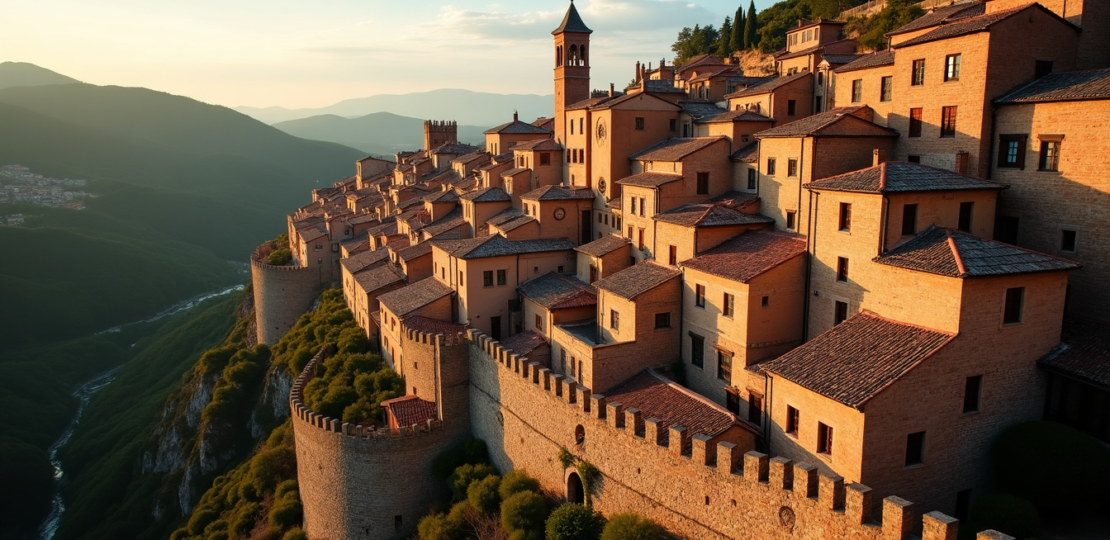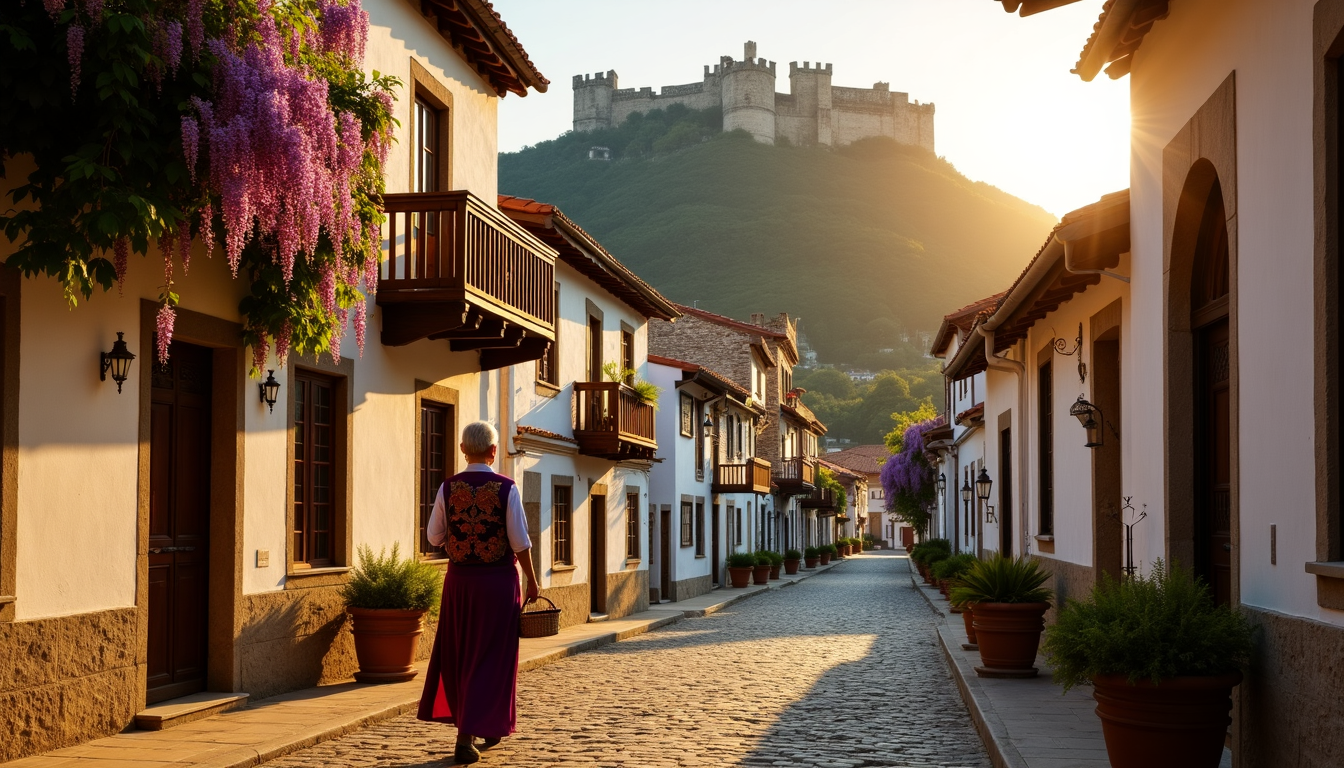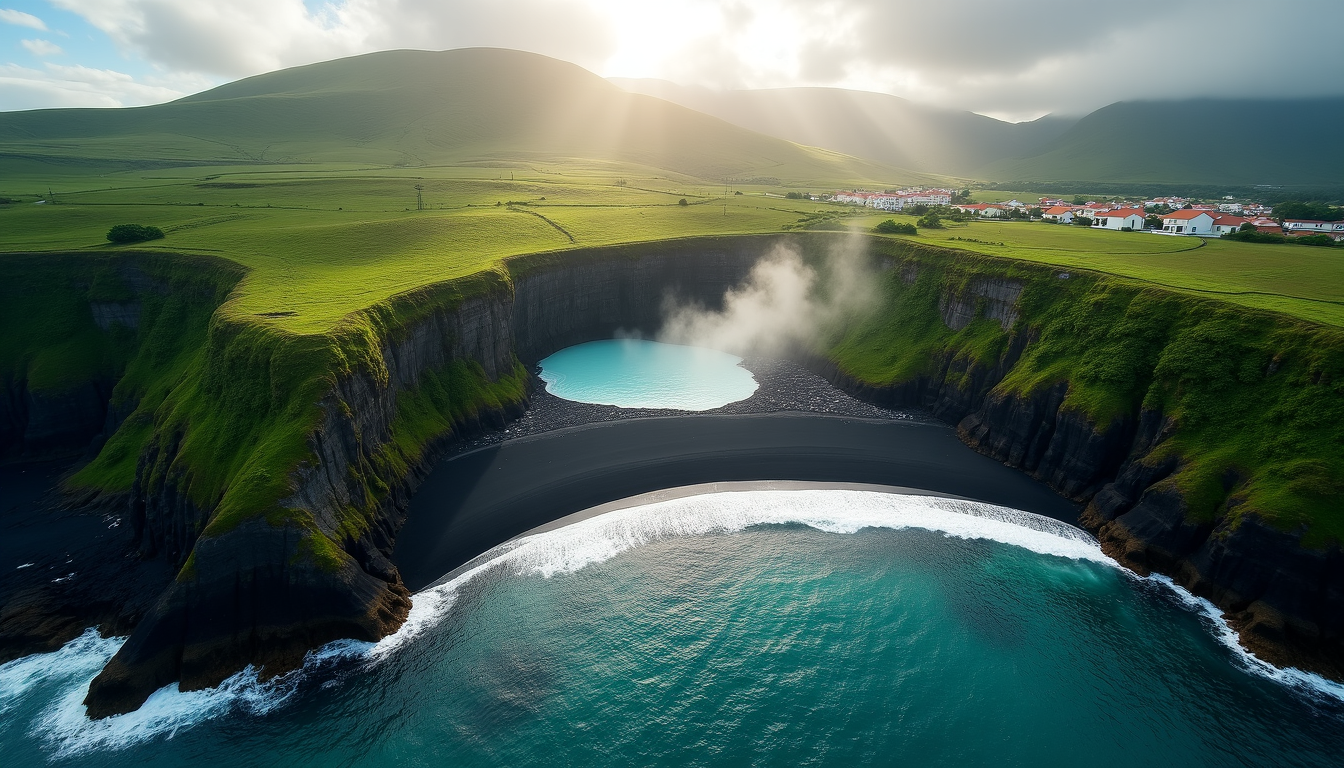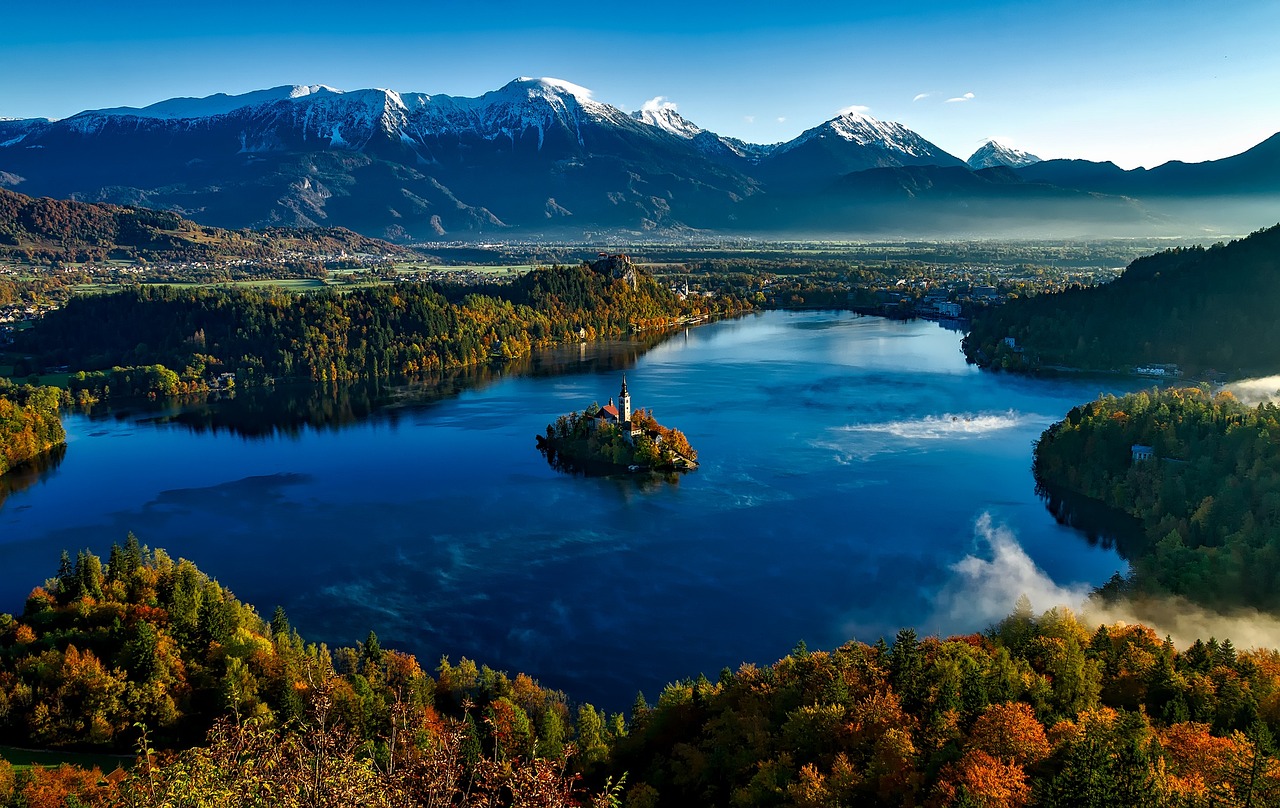13 Hidden Gems in Albarracin: Spain’s Best Medieval Town Secrets (2025)
February 2, 2025 | by arbindbodr@gmail.com

Albarracín stands as a living museum. This remarkable place holds more than 8,000 years of human history within its ancient walls.
Most tourists rush to Spain’s packed coastal cities. Yet this enchanting medieval town sits quietly in the Sierra de Albarracín. It remains one of the best-preserved treasures on the Iberian Peninsula that few people visit. The historic center bans all cars, which lets visitors roam through narrow medieval streets that look almost exactly as they did in the 10th century.
My exploration of this amazing town, just 30 minutes from Teruel, led me to find incredible secrets. These range from prehistoric Levantine paintings to Roman aqueducts hidden since the 1st century. Every stone in its fortified walls and cathedral tells a story. Now I’m ready to share 13 hidden treasures that most people never get to see.
Secret Passageways of Murallas de Albarracin

Image Source: Tripadvisor
The magnificent Murallas de Albarracín stretches beyond a kilometer. These medieval walls feature impressive towers and gates that once guarded this ancient stronghold. These remarkable fortress walls, built in the Islamic period, now welcome adventurous explorers with hidden passages and breathtaking viewpoints.
Hidden Entrance Points
The Portal del Agua stands as a main hidden entrance with its grand gate arch and connecting tower. The Portal de Molina leads visitors to the southern section that runs toward the river. The Torre del Andador rises as the tallest and most commanding point of the fortress.
Best Photography Spots
These spots will give you amazing views of the walls:
- The cathedral plaza and Baroque chapel square showcase the walls’ grandeur
- The blue hour just after sunset bathes the pink stone walls in dramatic light
- The western viewpoint reveals how the defenses flow strategically
Visiting Tips and Times
You’ll find fewer crowds and better lighting conditions in early morning or late afternoon. Good anti-slip shoes will help you navigate the steep, sandy, stone-covered paths safely. Watch your step along the routes since the cliff edges don’t have barriers or handrails. While the walls welcome visitors free of charge, climbing the Torre del Andador remains off-limits.
Casa de la Julianeta’s Hidden Chambers

Image Source: Traveling Jezebel
The Casa de la Julianeta stands where Portal de Molina meets Calle de Santiago, and its unusual structure seems to defy gravity.
Architecture Secrets
This 14th-century gem shows medieval engineering that’s nowhere near ordinary, with rooms that stick out at odd angles and a top-heavy design. The building’s walls blend adobe and wood to adapt to the uneven ground. The structure gains extra space on its upper levels through an intricate network of wooden beams and red plaster. This design was needed because the streets had to be wide enough for carts to pass through.
Historical Significance
Casa de la Julianeta’s location is a vital defensive position at the Puerta de Molina entrance, making it one of Albarracín’s oldest houses. The building shows how people built homes in the 14th century. We used irregular lines and unique architectural features that have made this house the most photographed building in Teruel province.
Visitor Access
Artists now use the Casa as their home and workshop. The building’s interior remains off-limits, but you can see its amazing exterior from different spots along C. Santiago. You’ll find the best view about 100 meters from the intersection, where the building’s unique features stand out. The streets are quieter in the early morning hours, which makes it the perfect time to take photos.
The Forgotten Trebuchet Park

Image Source: Tripadvisor
A fascinating park dedicated to medieval siege warfare sits just outside the city’s medieval walls. Two local artisans – a father and son – have handcrafted an impressive collection of 50 scale-model siege weapons that fill this unique space.
Medieval Warfare History
The park showcases siege warfare tactics from Rome, Greece, and medieval Europe. Visitors discover how defensive architecture changed alongside siege weapons through the ages. A full-scale trebuchet stands as the park’s centerpiece, showing the brilliant engineering skills of medieval military architects.
Interactive Experiences
Visitors can explore medieval warfare through these engaging features:
- Clear breakdowns of siege weapon mechanics
- Rich historical context from 18 documented sources
- Real-time projectile launch demonstrations
- Direct interaction with scale models
The park goes beyond static displays to create an immersive experience that concludes with an exciting demonstration – watching a working catapult launch projectiles.
Admission Details
The park sits at Calle Carretera 05 km 1, with guided tours priced at €3. This makes it one of the most budget-friendly attractions in Albarracín. Visitors don’t need to book ahead but can call +34 978 60 16 89 to check tour times. The collection will grow larger soon, as plans exist to add 300 more siege weapons.
Ancient Roman Aqueduct Ruins

Image Source: Ayuntamiento de Albarracín
A remarkable engineering marvel lies beneath the rugged terrain of Sierra de Albarracín. This Roman aqueduct has stood for two millennia, stretching 25 kilometers from Albarracín to Cella. The structure ranks among Spain’s most important hydraulic engineering achievements.
Historical Background
The Romans built this masterpiece in the first century BC to carry water from the Guadalaviar river basin to the Cella plateau. Their design could deliver an impressive 23,000 cubic meters of water each day. We built it to supply a small Roman settlement under modern-day Cella. The aqueduct’s massive capacity hints at other uses, such as supporting agriculture and industrial activities.
Hidden Sections
The sort of thing I love about this aqueduct is its underground network. Workers carved roughly 9 kilometers of tunnels through solid rock. These galleries reach heights of 170-220 centimeters and span widths of 80-125 centimeters. The construction’s remarkable elements include:
- Ventilation shafts (putei) every 20-40 meters
- Side windows (lumina) for maintenance
- Spillways to control water flow
- Diversion channels for agricultural use
How to Find It
Gea de Albarracín’s visitor center makes an ideal starting point for exploration. The route has eight adapted sections with parking facilities and information panels. Santa Croche Castle’s nearby section showcases above-ground channels and hand-dug galleries. Notwithstanding that, the trail runs close to road A-1512, so visitors should navigate some sections carefully.
El Molino del Gato’s Secret Garden

Image Source: Tripadvisor
El Molino del Gato sits hidden beneath a historic bridge in Albarracín. This 500-year-old flour mill has become one of the town’s most fascinating spaces.
Garden Features
A running mill stream flows beneath glass floor panels, making it the garden’s stunning centerpiece. A spacious terrace stretches over the water and creates several unique areas:
- A quiet drinking spot surrounded by native plants
- An art gallery that hosts temporary exhibitions
- A comfortable outdoor seating area where people gather
Best Time to Visit
El Molino del Gato shows its true magic during evening hours. The water flowing under the glass panels looks spectacular with atmospheric lighting. Visitors can enjoy local cold cuts and drinks in the garden area that buzzes with life after sunset.
Local Legends
This water-powered flour mill dates back to 1505 and stands as proof of medieval engineering. The structure is without doubt Albarracín’s slice of bohemia that serves as both a social hub and cultural center. Visitors can see the mill’s original mechanisms through the glass flooring, which often surprises them on their first visit.
Hidden Chapel of San Juan

Image Source: Besides the Obvious
The Chapel of San Juan shows medieval craftsmanship and religious devotion from its quiet location in Albarracín’s historic district.
Religious Artifacts
This chapel contains a wealth of religious treasures. The Gothic paintings in the antechapel make up part of the medieval painting collection at the Diocesan Museum. The chapel displays remarkable metalwork that includes:
- The 14th-century Processional Cross of Noguera, crafted from brass plate and gold with Byzantine enamel
- A 16th-century ‘pax’ attributed to Florentine sculptor Benvenuto Cellini
- A 17th-century monstrance with intricate silver details
Architectural Details
The chapel’s design naturally combines Gothic and Mudejar architectural styles. An ornate 18th-century gilded and polychrome altarpiece adorns the front, featuring the Virgin of the Rosary at its center. The Baroque atmosphere creates a theatrical mood with unique clerical figures placed behind trellising and curtains.
Visiting Hours
The chapel restricts access to religious days and scheduled viewing times to maintain its sacred atmosphere. The valuable artifacts need careful climate control for their protection. Morning visits offer the best experience as natural light streams through the chapel’s historic windows and lights up the Gothic paintings.
The Secret Viewpoint Above Plaza Mayor

Image Source: Tripadvisor
A hidden viewpoint sits above medieval Albarracín’s heart and gives you amazing views of the town’s historic center. You’ll find this spot high above Plaza Mayor, and a short climb will reward you with spectacular views of the cathedral, hills, and the Guadalaviar river.
Finding the Spot
The viewpoint stands above Plaza Mayor and you can reach it through the Portal de Molina. The plaza stays busy throughout the day and makes a great starting point to explore. The walk to the viewpoint is pretty easy, but all you just need to watch your step on the final stretch.
Photography Tips
The Portal de Molina gives you the best photo spots, where you can frame the town beautifully through its elegant arch. The plaza’s more than 225 balconies are a great way to capture the town’s character. Early morning is perfect to shoot architecture without crowds, while afternoon light adds a warm glow to your photos.
Sunset Views
The viewpoint becomes a dream spot for photographers as day turns to night. Golden sunlight washes over the medieval buildings and creates beautiful shadows on ancient stones. You can see the town’s clever hillside layout among other amazing views. Clear views of the historic Wall and Guadalaviar River make this spot perfect to take evening photos.
Artisan Quarter’s Hidden Workshops

Image Source: sights uncovered
Hidden workshops line Albarracín’s winding streets. Here, skilled artisans keep centuries-old crafting traditions alive. Each workshop tells its own story of Spanish craftsmanship.
Local Craftsmen
Albarracín’s artisans dedicate themselves to red plaster manufacturing, a craft you’ll find nowhere else. The town’s restoration work depends on this salmon-pink material made from local stones. Craftsmen dehydrate gypsum in semi-elliptical stones for 18 hours to create a product that’s both durable and historically authentic.
Traditional Arts
The town’s artistic heritage covers pottery, woodcraft, and textile production. Two artist studios now make their home in the Casa de la Julianeta, giving traveling craftsmen a place to work and find inspiration. Local workshops are a great way to get hands-on experience in:
- Pottery molding and ceramic painting
- Ancient weaving techniques
- Traditional woodworking methods
Shopping Guide
Local craftsmanship shines in these specialized shops:
Inspiralbarracin sits on Calle de San Antonio 5, blending traditional crafts with local groceries. Artesanía Jarreta at C/ Azagra 1 showcases handcrafted items and regional souvenirs. Rústico Albarracín at Portal de Molina 7 displays carefully selected traditional crafts. Each piece reflects the region’s artistic heritage, made using techniques passed down through generations.
Underground Wine Cellars

Image Source: Tripadvisor
The ancient wine cellars beneath Albarracín’s cobblestone streets tell a fascinating story of winemaking traditions. We dated these underground chambers back to the 16th century. They stand as remarkable examples of medieval engineering prowess.
Historical Significance
These underground cellars became the heart of local wine production through the ages. Craftsmen carved these caves into rock slopes that managed to keep a steady temperature between 12-13°C year-round. The natural temperature control made these cellars perfect spots for wine production and storage, especially given the region’s extreme weather patterns.
Wine Tasting
These cellars are a great way to get unique tasting experiences with local wines. A typical session has:
- Traditional wine sampling with regional cheeses
- Guided explanations of wine-making processes
- Pairings with local delicacies
Tour Information
Your journey starts with an exploration of the underground network where guides share stories of historical wine-making methods. These cellars are available through guided visits between 10 AM and 6 PM. Water leaks and structural problems create ongoing challenges in preserving these spaces. Groups of 8-10 visitors work best to let everyone explore these remarkable underground chambers comfortably.
Hidden Islamic Architecture

Image Source: Free Tour
The Banu Razin dynasty’s influence flows through Albarracín’s streets. Their Islamic architectural heritage stands as evidence of their 11th-century rule.
Moorish Influences
Islamic roots of the town date back to the early 11th century. The powerful Berber family built their independent taifa here. This period ended up marking the start of Albarracín’s unique architectural identity that thrived until the region joined the Kingdom of Aragón in 1284.
Architectural Features
The town’s Mudéjar architecture earned UNESCO World Heritage status by blending Spanish and Islamic artistry beautifully. Key features from that era include:
- Ornate doorways with geometric patterns
- Carved wooden balconies with Islamic motifs
- Red clay buildings stacked in distinctive patterns
Interior spaces take precedence over exterior grandeur, making it different from other medieval Spanish towns. The town has managed to keep authentic Islamic elements intact. The original fortress grounds now serve as an archeological site.
Walking Route
The Castle of Albarracín marks the starting point of the former Muslim medina. Narrow streets wind through preserved Islamic architectural elements and lead to the archeological museum in an 18th-century building. This museum’s detailed exhibits on Islamic and Christian periods use dioramas to help visitors learn about the town’s rich cultural heritage.
Secret Medieval Gardens

Image Source: At Lifestyle Crossroads
The medieval quarter of Albarracín holds a treasure between its stone walls. Secret courtyards and terraced spaces preserve ancient garden traditions. These 1300-year-old gardens showcase a fascinating blend of Christian and Islamic horticultural practices.
Plant Species
The gardens of Albarracín nurtured three distinct plant categories. Fruit trees dotted the landscape with figs, walnuts, apples, almonds, peaches, and mulberries. The vegetable plots yielded celery, fennel, carrots, kale, melons, and various legumes. A rich variety of herbs thrived in these gardens, and coriander stood out as a favorite.
Garden History
Albarracín’s gardens reflect the region’s cultural progress through time. The garden landscape featured elegant architectural spaces with fountains (Jardínes), urban market gardens (Huertos), commercial orchards (Huertas), and peasant holdings. These spaces served as both food sources and social gathering spots. Islamic traditions guided the placement of stable crops in water-rich areas away from houses.
Seasonal Highlights
Strict seasonal patterns guided the gardening calendar. Gardeners planted chickpeas and peas in spring, while melons and gourds took center stage in summer. The harvest season brought an abundance of strawberries, pomegranates, and cherries. Winter months saw gardeners tending to olive groves and preparing soil for spring planting.
The Lost Tower of Doña Blanca

Image Source: Ayuntamiento de Albarracín
The Torre de Doña Blanca stands tall at Albarracín’s southern edge. This square watchtower reaches 18 meters high and is a vital part of the city’s medieval defensive network.
Tower History
The tower’s construction dates back to the late 13th century at the southern end of the Guadalaviar River’s meander. Archeological excavations have found Arab ceramic remains that confirm the structure’s Muslim origins. The tower was built as a defensive fortification and worked with the Muela and Andador towers in a sophisticated warning system. The structure became a library for the Dominican convent in the 17th century.
Access Points
Thick masonry walls with unique iron slag incrustations make up the tower’s structure. These walls shimmer when light hits them just right. The tower’s design includes:
- A single entrance door 7 meters above ground level
- Three distinct floors with significant height
- Aragonese-style crossbows and arrow slits on the second and third levels
Best Views
The tower now serves as an exhibition space since its restoration in 2001. Its terrace gives visitors breathtaking panoramic views of Albarracín’s monumental complex. A captivating local legend adds to the tower’s charm. People say that on summer nights with a full moon, you might see Doña Blanca’s ghost. This banished princess, who died of sadness within these walls, supposedly descends to bathe in the Guadalaviar river.
Hidden Albarracin Food Spots

Image Source: Islands
Albarracín’s culinary scene extends beyond its stone walls and medieval architecture to offer a feast of authentic flavors rooted in centuries-old traditions.
Local Delicacies
Signature dishes showcase the town’s gastronomic heritage. Ternasco de Aragón, a tender lamb dish seasoned with local herbs, remains the life-blood of regional cuisine. The local specialties reflect an array of rich cultural influences:
- Migas – A hearty mix of breadcrumbs and garlic, often served with chorizo
- Trucha a la Navarra – Trout stuffed with ham
- Almojábanas – Sweet, fluffy doughnuts with Muslim influences
Family Restaurants
Rincón del Chorro has served traditional Sierra de Albarracín cuisine since 1980. La Despensa de Tusta’s intimate setting features just five tables where guests enjoy locally-produced delicacies. Casino welcomes diners year-round with panoramic views and authentic regional dishes.
Dining Tips
Popular spots like Señorío de Albarracín, known for its creative take on traditional ingredients, require advance reservations. The Jornadas Gastronómicas de las Setas celebrates local mushrooms and truffles each fall. Family dining peaks between 1:00 PM and 3:00 PM, while evening service starts at 8:00 PM.
Comparison Table
| Hidden Gem | Location/Access Point | Historical Period | Main Features | Visitor Information | Special Notes |
|---|---|---|---|---|---|
| Secret Passageways of Murallas | Portal del Agua & Portal de Molina | Islamic period | 1km fortress walls with towers and gates | Free access; best visited early morning/late afternoon | No barriers/handrails near cliff edges |
| Casa de la Julianeta | Portal de Molina/Calle Santiago intersection | 14th century | Top-heavy design with jutting rooms | Exterior viewing only; residence-workshop | Most photographed house in Teruel province |
| Forgotten Trebuchet Park | Calle Carretera 05 km 1 | Medieval period | 50 scale-model siege weapons | €3 guided tours | Live demonstrations of working catapult |
| Ancient Roman Aqueduct | Near Santa Croche Castle | 1st century BC | 25km length, 9km underground tunnels | Visitor center in Gea de Albarracín | Delivered 23,000 cubic meters water daily |
| El Molino del Gato | Beneath historic bridge | 1505 | Glass floor panels over mill stream | Best viewed during evening hours | Original mill mechanisms visible |
| Hidden Chapel of San Juan | Historic district | Medieval period | Gothic paintings, religious artifacts | Limited access on religious days | Features 14th-century Processional Cross |
| Secret Viewpoint Above Plaza Mayor | Above Plaza Mayor via Portal de Molina | Medieval period | Panoramic views of cathedral & river | Morning light best for architecture photos | 225+ balconies visible from viewpoint |
| Artisan Quarter | Multiple locations | Traditional | Red plaster manufacturing, pottery | Shops open during business hours | Houses multiple artist studios |
| Underground Wine Cellars | Below street level | 16th century | Natural 12-13°C temperature control | Tours 10 AM-6 PM | Small groups (8-10) recommended |
| Hidden Islamic Architecture | Starting at Castle of Albarracín | 11th century | Mudéjar architecture (UNESCO site) | Walking route accessible | Blend of Spanish-Islamic artistry |
| Secret Medieval Gardens | Medieval quarter | 7th-8th centuries | Three categories: fruits, vegetables, herbs | Seasonal access | Islamic-Christian horticultural blend |
| Lost Tower of Doña Blanca | Southern edge of town | Late 13th century | 18m height, 3 floors | Exhibition space since 2001 | Features iron slag incrustations |
| Hidden Food Spots | Throughout town | Traditional | Local specialties like Ternasco | 1:00-3:00 PM, 8:00 PM onwards | Best during fall mushroom season |
Conclusion
Albarracín is not just another medieval town stuck in the past. My time in its winding streets and quiet corners helped me find a living museum. Every stone, passageway, and ancient building shares stories that stretch back eight thousand years.
These 13 lesser-known spots show the town’s heritage better than any guidebook. The town’s history comes alive through Roman aqueducts and Islamic architecture. Each site adds another layer to the town’s rich past.
This small town fills its medieval streets with surprising variety. Stone walls hide secret gardens, and old wine cellars keep age-old traditions safe. Local craftspeople still work with traditional methods that keep the town’s culture thriving.
My trip through Albarracín showed me something rare – a place where you can touch and feel history. These hidden spots, well-preserved but often missed by visitors, make this medieval town perfect to connect with Spain’s authentic past.
RELATED POSTS
View all


